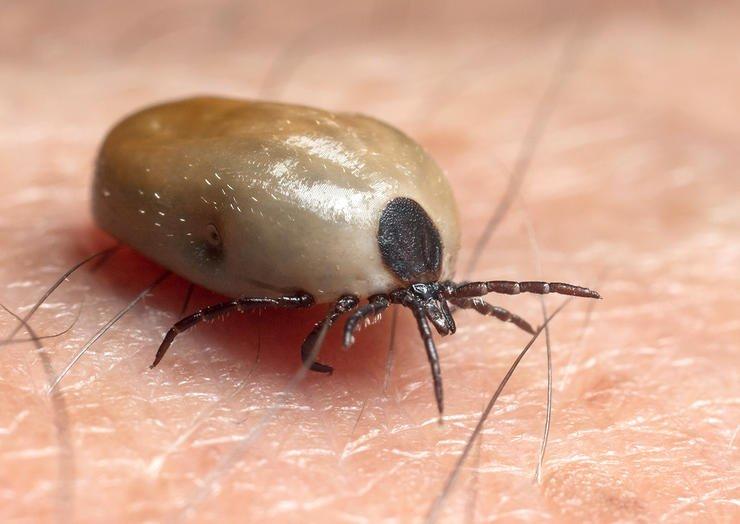Along with important tips to stay tick-free and safe this summer
We all hate the nasty little devils, but ticks are largely unavoidable as we do habitat work and start scouting and hanging treestands in the summer and early fall months. Here are four things to know about ticks, along with a few tips to stay tick-free and healthy.
Ticks can make you really sick.
You've heard about Lyme disease and Rocky Mountain spotted fever, but the Centers for Disease Control (CDC) has identified at least 10 more tick-borne illnesses in the United States. A tick bite typically causes a nasty red welt that itches for a few days. Or it could lead to more serious symptoms, like fever, fatigue, headache, muscle pain, paralysis, or an allergy to red meat.
In rare cases, even worse. Earlier this spring in Georgia, a Lone Star tick carrying the Heartland virus bit and killed a man. In April, a man in Maine died from the rare Powassan virus, which he contracted from a tick bite.
Click here to see which tick species are common in your area, and which disease they might carry.
Once mostly an inconvenience, ticks have now become carriers of potentially debilitating diseases. Safety precaution No. 1 is to keep them from your clothes and body. Before a workday or preseason scout, spray clothes and boots (not skin) with permethrin and let dry completely. Permethrin is an acaracide that kills ticks that come in direct contact with it.
After a day in the woods, remove clothes immediately and tumble them in a hot dryer for 10 to 15 minutes to fry any ticks that you might have carried home.
Ticks lie in wait for you.
Ticks, which can't fly or jump, hunt with a wait-and-watch approach called questing. They climb to the top of a grass blade or the edge of a bush or branch and wait for potential prey (you) to walk by. Scientists note that during questing, ticks hold on to leaves and grass by their third and fourth pair of legs. They hold their first legs outstretched, and when you or I brush against their questing lair, they happily climb aboard.
(Don't Miss: Texas Rancher Fights Back as State Plans to Kill 500 Penned Deer)
Ticks wander creepily on your body.
Researchers have found that once on board your clothes, some ticks go right for bare skin and attach quickly, while others wander, crawling and looking for spots where skin is thinner and moister. Ticks typically start low, clinging to your pant legs or waist, and then creep upward to attach around the head or neck. As you likely know from experience, ticks are sometimes found in the groin area and armpits.
I cannot stand the thought of nasty ticks wandering up my bare leg, so I always wear calf-high snake boots in the summer woods, along with a long-sleeve shirt. A good tip is to wrap duct tape around your cuffs to keep ticks out.
Once home, after undressing and tossing my clothes in the dryer, I run for the bathroom, get naked, do an initial tick check, jump in a hot shower, dry off, and do a second thorough tick check. Apologies for that mental image, but you get my drift. Follow this routine and you will stay mostly tick-free this summer.
The anatomy of a tick is perfect for sucking your blood.
Spend enough time outdoors and no matter how careful you are, once in a while a little bugger will bite you and dig in.
Scientists note the mouthparts of a tick are outfitted with two sets of sharp hooks. These hooks pierce and pull the skin apart and allow the tick to burrow in, where it then inserts a hypostome into the wound. Yikes! The hypostome acts like a tiny harpoon to keep the tick secured to your skin as it sucks your blood.
To reduce exposure to a stuck tick's potentially infectious fluids, never squeeze or pull its body with your fingers or, worse, tear the tick's mouth. Here's the proper way to remove a bloodsucking tick, according to the CDC:
Use fine-tipped tweezers to grasp the tick as close to the skin's surface as possible.
Pull upward with steady, even pressure. Don't twist or jerk the tick; this can cause the mouthparts to break off and remain in the skin. If this happens, remove the mouthparts with tweezers. If you are unable to remove the mouth easily with clean tweezers, leave it alone and let the skin heal.
After removing the tick, clean the bite area and your hands with rubbing alcohol and soap and water.
(Don't Miss: Find a Deadhead Buck? Keep it Legal)












